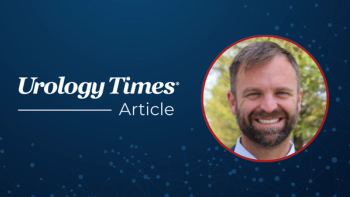
SBRT shows long-term efficacy for low-, intermediate-risk PCa
A multi-institutional consortium study conducted to fill a gap in knowledge about long-term outcomes of stereotactic body radiation therapy (SBRT) for low- and intermediate-risk prostate cancer shows that both the long-term efficacy and safety of SBRT compare favorably with the profiles of other established radiotherapy modalities.
A multi-institutional consortium study conducted to fill a gap in knowledge about long-term outcomes of stereotactic body radiation therapy (SBRT) for low- and intermediate-risk
The study was an individual patient-level analysis of 10 single-institution and two multi-institution prospective trials. It included data from 2,142 patients who were treated between 2000 and 2012. Median follow-up for the cohort was 6.9 years; more than 1,300 men were still being followed at 6 years, and follow-up to 8 years was available for more than 570 men.
The analyses looked at rates of biochemical recurrence, distant metastases, and acute and late gastrointestinal (GI) and genitourinary (GU) severe (Grade ≥3) toxicities. Outcomes for all endpoints were commensurate with data reported for other radiation modalities, said Dr. Kishan, of the University of California, Los Angeles.
Read:
“SBRT represents a fast and convenient radiotherapy approach, and while there is a growing body of published evidence supporting its use for low- and intermediate-risk prostate cancer, the data have been from single-institution studies or multi-institution studies with short follow-up. Our study was conducted to address existing trepidation regarding the long-term efficacy and safety of SBRT,” he explained.
“Because the studies we included in our analyses were uncontrolled, we cannot say that SBRT should be the standard of care for low- and intermediate-risk prostate cancer. However, we believe our findings certainly support the idea that SBRT can be a standard of care option. Confirmatory randomized trials are ongoing, but in the meantime, our data should allay fears about unexpected urinary and rectal toxicity.”
In contrast to traditional external beam radiotherapy approaches for low- and intermediate-risk prostate cancer that entail delivery of small daily doses of radiation over an extended time frame, which is typically 8 to 9 weeks, SBRT takes advantage of the unique sensitivity of prostate cancer to higher doses of radiation and condenses the treatment course to 4 to 5 high-dose sessions. About 5% of men included in the study, all from one institution, received weekly treatments; among the rest, equal proportions were treated daily or every other day.
The patients had a mean age of 67.9 years. About 55% of men had low-risk disease and 45% had intermediate-risk prostate cancer; in the intermediate-risk group, nearly one-fourth had unfavorable intermediate-risk disease. Nearly two-thirds of men had biopsy Gleason grade 1 prostate cancer, and approximately three-fourths had T1c disease. Baseline mean PSA was 6.4 ng/mL.
About 5% of men received androgen deprivation therapy (ADT) with a short median duration of about 3 months. Among men with unfavorable intermediate-risk disease, 9.4% received ADT.
Next:
Safety was evaluated by calculating crude incidence rates for acute and late GI and GU toxicities and 7-year cumulative incidence estimates for late toxicities. The crude incidence rates of acute GI and GU toxicity were 0.1% and 0.6%, respectively. For late GI toxicity, the crude incidence rate was 0.3% and the 7-year cumulative incidence was 0.4%. The crude and 7-year cumulative incidence rates for late GU toxicity were 2.1% and 2.3%, respectively.
To put the safety of SBRT in perspective, Dr. Kishan compared the toxicity data with rates for other radiotherapy options using pooled data from published large-scale clinical trials. The comparator modalities included conventional fractionation, low dose rate (LDR) and high dose rate (HDR) brachytherapy, and conventional fractionation with LDR or HDR brachytherapy boost.
Also see:
“This is not a statistical comparison, but there does not appear to be any signal of increased toxicity with SBRT,” he said.
As a caveat, Dr. Kishan told Urology Times that there are relatively fewer data on SBRT for prostate cancer in men with larger prostates and for men who have undergone transurethral resection of the prostate.
“These have traditionally been relative contraindications to brachytherapy, and there have been mixed reports about the urinary toxicity after SBRT in men with either of these features,” he said.
“Conventional IMRT, so-called moderate hypofractionation, may still be good options for these patients. Radiation oncologists should provide a balanced discussion of all radiation options, which in most cases would include SBRT as a potential treatment modality.”
Dr. Kishan receives honoraria from Varian Medical Systems and ViewRay and consulting fees from Varian Medical Systems.
Newsletter
Stay current with the latest urology news and practice-changing insights — sign up now for the essential updates every urologist needs.


















